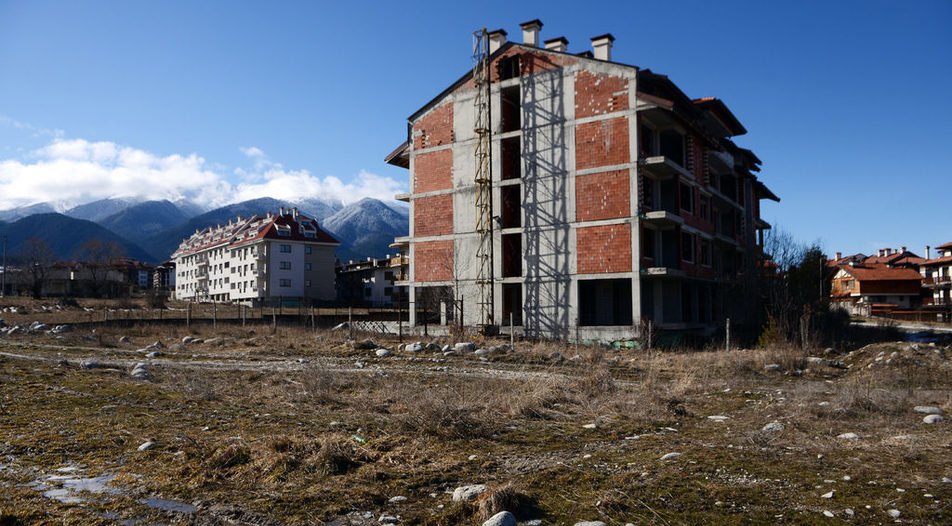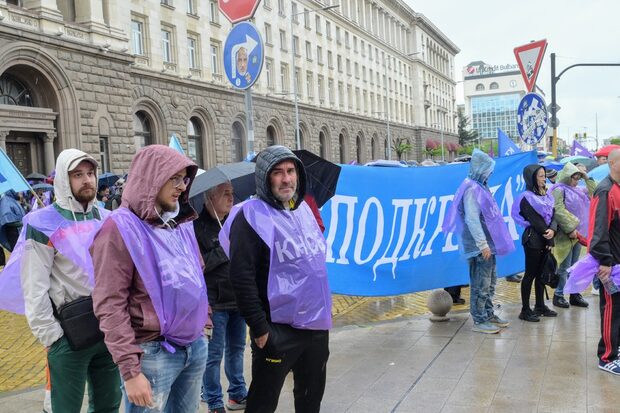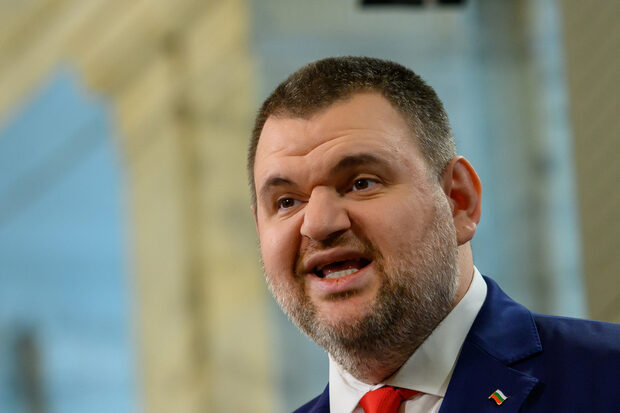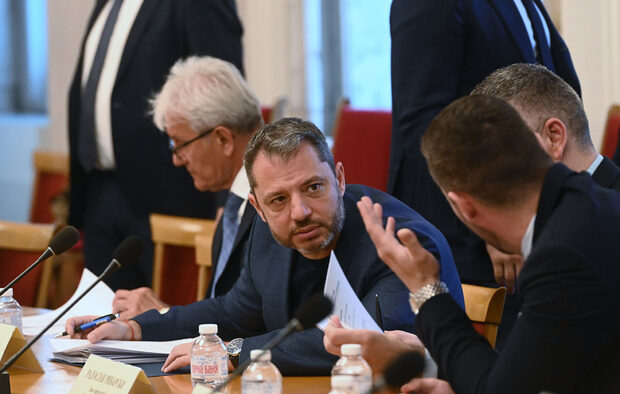Bansko Ski, Yulen, Pirin National Park, Tseko Minev, Neno Dimov, Georgius Georgiu All of these names were mostly unknown outside Bulgaria until two months ago. But then a controversial government decision opening the way to construction works in the mountain park, a UNESCO World Heritage site, sparked protests in Sofia and beyond that coincided with the opening of the Bulgarian presidency of the Council of the EU.
The sequence of events unfolding since then has been an emotional roller-coaster - first, protests against the amended management plan of Pirin National Park were confronted bycounter-protests "for" the development of ski tourism in Bansko. Then, Ska Keller, co-chair of the Greens faction in the European Parliament, joined the environmentalist rallies just to get threatened with expulsion by Bulgaria's deputy prime minister Valeri Simeonov and his party - a reaction that prompted a huge media outcry outside Bulgaria. Last, but not least, the protests and counter-protests led to an unexpected confession: prime minister Boyko Borissov confirmed in a televised interview the public secret who the real owner of the offshore company that holds the concession rights over the Bansko ski zone is - just to get rebuked by the company itself the next day.
What did the government allow?
At its last 2017 meeting held on December 28, the government adopted amendments to the Pirin National Park Management Plan submitted by environment minister Nino Dimov. They open the way for more property developments in the Bansko ski area.
The changes significantly expand the investment zones, although according to Mr Dimov, only the construction of sports facilities such as lifts and tracks will be permitted in the Bansko and Dobrinishte ski areas and 'nothing else'. Until now only repairs of the existing facilities and ski tracks could be carried out but with the amendment new facilities could be built.
The amended plan also provides for construction of new water catchments in the national park with the explanation that they are needed for the neighboring villages. However, none of those villages experience water supply shortages. The only explanation for the proposed catchments is either an envisaged further expansion of the tourist accommodation area or preparation for new skiing tracks that will require artificial snow. This fact adds to the suspicions that the expansion of the ski area in Bansko is actually an attempt to revive the real estate market in the town.
In addition, a change is introduced in the management plan for the area, according to which "construction, repair and reconstruction activities" in the forest ecosystem protection and recreation area will enjoy the same level of tolerance as in the area of the tourism facilities. Thus the ban on construction works in an area where human activity is allowed only in exceptional cases is circumvented.
The concessionaire, Yulen has not been hiding its intentions of providing the ski area with more tracks, in addition to the second lift, and now it has the freedom to start a procedure for the implementation of such concept.
Why do the Greens (and many more) protest?
As expected, nature conservation organizations and citizens started protests against this decision. In the past two months since the decision was taken, they took to the streets nine times, once every Thursday evening, calling for the reversal of the environment ministry plan and the resignation of Neno Dimov. The protests have resonated both across the country and abroad, with dozens of cities in Bulgaria and Europe joining the Sofia marches. Many see the protests not merely as environmental but as marches against cronyism and corruption replicating the anti-Oresharski rallies of 2013-2014. The topic polarizes public opinion not because ski tourism is harmful or lift facilities create an irreversible environmental problem but because there have been irregularities with the concession in the past 15 years that have been buried by the authorities.
First of all, an inspection of the environment ministry found out that Yulen had exceeded its rights of concessionaire on several occasions by expanding the skiing zone into the National Park - a case which remained unaddressed by the state control agencies. The feeling of uncontrolled behavior on the part of Yulen is also fueled by the controversial behavior of the government. After Nona Karadzhova, in her capacity as an eco-minister in the first GERB government, acknowledged the violation, recently she backtracked on her position with, to put it mildly, the frivolous argument that at that time they had not read the addendum to the contract.
The behavior of the government and the legislature - invariably in favor of the concessionaire - does not bolster public confidence that rules are respected. Moreover, the ownership of the concessionaire itself is not transparent. It is widely associated with Bulgarian national Tseko Minev and the bank he owns, First Investment Bank (FIB), although the formal owner of Yulen is the offshore, Cyprus-registered company Marengo Trading. This fact is believed to be allowing FIB to circumvent the ban on related party-funding. The unclear ownership of the company brought up an absurd situation in mid-February, when prime minister Boyko Borissov said on live TV that most probably Mr Minev is the real owner of the company holding the concession, just to get rebuked by the company and FIB the day after.
At the same time, the people behind Yulen own Vitosha Ski and the lifts in the Vitosha Mountain (on the outskirts to Sofia), most of which are already idled, and Vitosha Ski refuses to repair them. In this way it allegedly is redirecting skiers to Bansko.
Nature conservation organizations are well aware of the environmental standards and know when state institutions are trying to circumvent them. Pirin National Park falls under the provisions of UNESCO, the European and the national environmental legislation. Following the government decision of 28 December, the Greens threatened to refer the government to the European Commission for violation of two European directives. One of the topics the authorities are trying to neglect, is the compatibility of the decisions with UNESCO's provisions. This is evidenced by the desire of Bansko and Razlog municipalities to exclude one of the oldest reserves in Pirin from the organization's scope of protection.
Why does Bansko want a second lift?
Officials in the face of Bansko mayor Georgi Ikonomov are among the most active supporters of the project. The hospitality industry organizations in the town, with few exceptions, also support the proposed expansion of the ski area.
Actually, queues at the lift at certain periods during winter are a problem for Bansko but it is rather small compared to the bigger image problem related to the overdevelopment prior to the crisis. It hurts the traditional local business which can't compete with the big hotels offering cheaper packages including more services. As a result, most of the residents of Bansko gain nothing.
The development plan approved before 2016 clearly indicates that the municipality plans and the environment ministry have approved the development of eight new neighborhoods with a total capacity of 40,000 new beds on an area of 260 hectares near Bansko.
Is there an environmental issue with the construction of a second lift?
Part of the forests in the park will probably be affected by the construction and centuries-old trees may be cut down. According to the investor, Yulen, five new trees will be planted for each cut tree, which is irrelevant to UNESCO's protection. Neno Dimov said that the exact volume of compensatory mechanisms will be determined after an ecological assessment. He did not exclude damages to venerable trees, but shifted the responsibility to the expert committee which will assess the environmental impact assessment. Surely, the lift represents a more environment-friendly means of transporting skiers and tourists than the cars driving to Shiligarnika. However, the largest eco threat comes from giving the green light to construction, as the new tracks will require more new lifts on the mountain slopes and new accommodation facilities in Bansko.
What percentage of the park's area will be developed?
According to Neno Dimov, the construction of sports facilities will be allowed on 2% of the territory of the park above Bansko and 0.6% of the area above Dobrinishte. The other permitted zones will accommodate only water catchments for drinking purposes. However, the wording of the plan does not indicate "for drinking purposes". It remains unclear whether it would be allowed to form ponds, the water of which will be used to make artificial snow. It is a common practice to use the building of a ski station (especially if it is bigger, like the one of a gondola lift) for restaurants and cafeterias.
What is the difference between Pirin and the Alps?
At the time when the ski resorts in Austria or Switzerland were built, the conditions were completely different. The current legislative framework at the European level did not exist 50 or 100 years ago, so no comparison can be made with the construction works carried out half a century ago and the requirements for use of mountains nowadays.
Another problem is that the mountains in these countries are much larger and it is only natural that the length of the ski runs there is much higher. It is like comparing Bulgaria's sea cost - 378 km with the 12000 km of the Greek coast. Looking to the future, the key issues are the global warming, which is pushing the snow belt in the mountains to higher places, the related shortening of the winter season, and the need to properly determine whether ski resorts in areas below 2000 m above the sea level have any future.
Of course, the topic could easily fall into the false dichotomy of greens versus business, especially after the public scandal involving Ska Keller and Valeri Simeonov, who publicly threatened her with deportation for her decision to come to Sofia and join the Pirin protest marches in February. Yet, this juxtaposition underestimates the scope of the problem, because the fate of the Pirin National Park is a public issue - it addresses the preservation of Bulgarian national wealth and the shady ties between the government and business. This is why the protests go on with the backing of people outside of the environmental organizations. The case resembles what happened in 2012, when amendments to the Forest Act were again adopted despite significant doubts that they would benefit the same investors in ski resorts. The protests at the time gave birth to the informal Eagle Bridge community and united a much wider range of participants because of the perception that the state is violating the rules in order to serve individual interests.












